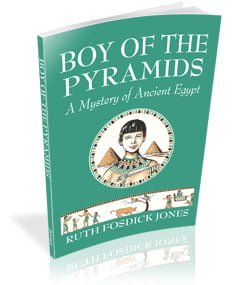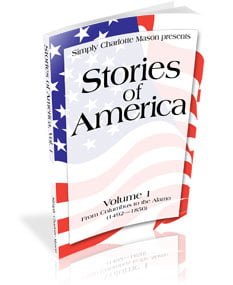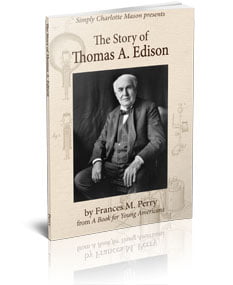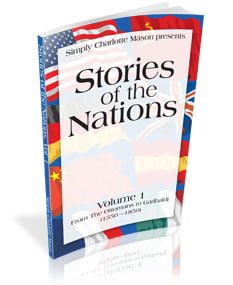60-day returns • free shipping on USA orders $129+


My husband has been lifting weights for several months now in an effort to get into shape and improve his health. It’s been good. The program he is using challenges him to regularly increase the number of pounds he lifts, and he was happily making progress and attaining new lift records until January rolled around. Then the wheels fell off the wagon.
All of a sudden he couldn’t progress any farther. He couldn’t lift anything heavier. What was wrong? After shooting some video and analyzing it, he discovered the problem: his form was off. He was not following the basic mechanics of how to lift correctly, and it was impeding his progress.
He had gotten to a certain level but he couldn’t progress beyond that without correct form.
For those of us who use Charlotte Mason methods, it’s good to examine our basic mechanics every once in a while too. I’ve talked to a lot of moms who are frustrated because they don’t seem to be making any progress. They’ve reached a certain point and can’t seem to get beyond it. When we discuss further, usually there is one component that they all mention. It’s a basic component of Charlotte Mason that can either make or break your progress: narration.
If you are doing a narration lesson correctly, you will make great strides and your children will enjoy learning. If your form is off a bit, however, that deviation can hinder you from reaching your goals.
So let’s take a few weeks to go over the basics of narration—the correct form, if you will—that will help you continue to progress and experience success.
A Successful Narration Lesson
A successful narration lesson has five steps. Usually when a homeschool mom is frustrated with narration, it’s because she is leaving out one of these steps.
Pick a good living book.
Some books are well nigh impossible to narrate, even for an experienced narrator. If you’re using one of those, you won’t make much progress. You want to make sure the book you’re reading touches the emotions, fires the imagination, and paints a picture that you can see in your mind’s eye as the author describes what is happening. This type of living book—one that gives ideas, not just dry facts—will pave the way for a smooth narration lesson.
Look ahead and behind.
This step is probably the one that is omitted most often. Yet it is an important part of the process and can make the difference between success and failure in a narration lesson. Take a few minutes to gain your bearings. Look at how today’s reading connects to what happened last time and prepare your mind for what will be read about today.
Read the passage.
Once your mind is prepared, let the author share his great ideas. Your mind will gain great food for thought. Just make sure that you know when to stop “eating,” rather than continuing to stuff your mind too full and not allow time to digest. In other words, keep a watchful eye on the length of the passage you read.
Retell the passage.
After the information comes into your mind, you must interact with it if you really want to know it. Considering what you read, pondering how it applies to other ideas you’ve gained, putting it into order, recalling details, mixing it with your opinion, and then forming those thoughts into coherent sentences and telling them to someone else is when real learning takes place. Charlotte Mason called this The Act of Knowing.
Discuss ideas.
Any questions that are asked should be open-ended discussion questions that encourage more interaction with the author’s great ideas. Questions such as these, and a lesson with all the components described above, will keep the focus on the joy of learning for personal growth. If you’re encountering “Will this be on the test?” comments, that’s a sure sign that something has shifted, your mechanics are off, and your progress is going to be hindered.
Let’s take the next few weeks to look at each step in more detail and get your narration lessons back into correct form.
Good Living Books
We’re pleased to be able to provide good living books that do, indeed, touch the emotions, fire the imagination, and paint a picture in your mind’s eye as they present stories from history. Books like these can make successful narration easier! We invite you to download the free sample chapters and see if any of them would be a good fit for your family and your studies.
Ancient World


Ancient Egypt and Her Neighbors— A fascinating narrative of life in Ancient Egypt intertwined with captivating stories of the other civilizations that existed alongside her—neighbors far and near. Makes the ancient world come alive! (Grades 1–6)


Boy of the Pyramids—The best living book we have found for younger children studying Ancient Egypt! This gentle mystery teaches so much about Ancient Egyptian culture, but in a way that is appropriate for children. (Grades 1–3)
American History


Stories of America, Volumes 1 and 2—This collection of stories from American history will make the past come alive. The narratives cover from Columbus to modern day (2011), and both volumes include corresponding poetry and helpful maps of the era. (Grades 1–6)


The Story of Thomas A. Edison—Combines an engaging narrative of the inventor’s life with pages from his diary and original drawings and patents from his work. Vintage photographs are included. (Grades 1–12)
World History


Stories of the Nations, Volumes 1 and 2—A delightful feast of stories relating famous people and events in world history from 1550 to present day. The conversational tone and flowing narrative makes this book a joy to narrate. (Grades 1–6)


Only a Dog: A Story of the Great War—A retelling of a true story from World War I. Appropriate for younger children as well as older. Introduces aspects of the war from the eyes of a loyal Irish terrier who is rescued from No Man’s Land. (Grades 1–6)

I’m looking forward to this series! Narration is one thing I think has impacted our homeschooling the most as we have acquired more of a CM flair in the last few years. So much busywork has been eliminated because I can hear what my children have learned by the narrations they share.
We are getting ready to read Ancient Egypt and Her Neighbors next month. It will be a lovely addition to our family studies!
I am looking forward to this series as well. We are in our first year of homeschooling and I ‘m not sure I know what to expect from my first grader’s narrations. He can go into great detail about certain events/stories of our experiences together when I am not expecting a narration. However he seems to really struggle with some books, like the d’Aulaires’ history books, for example.
Hoping to glean some new insights from this series that will help us!
Perhaps a book that is true rather than myth might be more appropriate for your little knowledge seeker. We started with the Bible and Story of the Nations.
This series is just what we need right now! Looking forward to each blog!
How often do you suggest doing narration?
Narration is a great tool for getting ideas to stick. So use it whenever you want the ideas you’re reading about to stick. I personally do not require narrations from historical fiction books, because those are not focused on the actual events and real people. I like to use them to give the student a “feel” for the time period, but I don’t require a narration. I usually require narrations for history/geography, science, and Bible readings. You do what works best for your children.
Only things differently I did was that with my little one with auditory sensory issues and deafness were (1)not just to write the word on a white board, but to also write it on color paper (NOT blue!) in cornmeal that was glued onto the page (use glue stick to write the word then sprinkle medium fine cornmeal over it – you want the texture) and have her trace the letters with her fingers on her predominant hand, while I was saying the word and (2)to touch my mouth and/or throat while I was saying the words again so that she understood that the symbols she saw were the words she felt from the cornmeal and heard with her ears – that they were the same. (she also had visual issues – sEVERE nystagmus, strabismus and was nearsighted – most of which we were able to get corrected over time – as well as auditory sensory issues and profound/moderate deafness – profound in one ear and moderate in the other – corrected with hearing aid). It all helped – AND helped a LOT in her language development (age 8 when I got her and barely above level of an 18 mo old and wt and ht of a small 3 yo) – and helped her to speak (along with her going EVERYWHERE with me – and my speaking to her a mile a minute as well! LOL